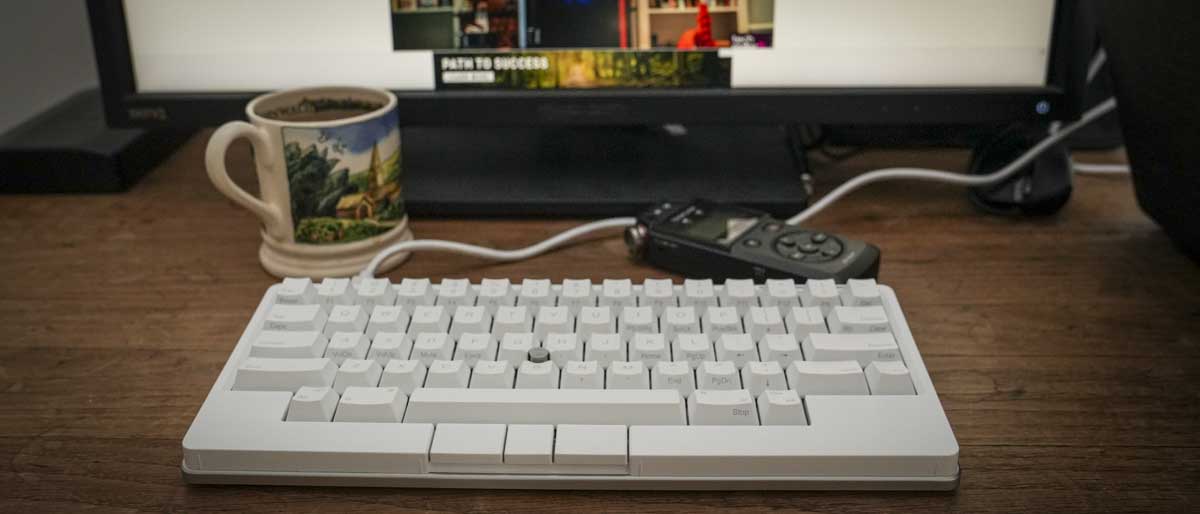
HHKB Studio: 30-second review
Getting used to a new keyboard is going to take a while, but thankfully before breaking the HHKB Studio from its packaging, I'd spent a few weeks with the HHKB Professional Hybrid S, and so the transition between the two was relatively smooth. The main stumbling block was that I'd got used to the 'Control' key on the other keyboard being positioned where the 'Shift' key now resided, so rather than wait for my brain to reprogram, I remapped the key, and that's where things changed for me when it came to my thoughts around these keyboards.
I'd already been impressed with the layout and the fact that you are able to delve into the Hybrid's key mapping to suit your intended use. The only issue with the Hybrid is that the layout has very much been designed with programmers in mind – and while the keyboard can be used by anyone, there were enough quirks for me to leave that one in the hands of coders. The Studio, which on the surface looks very similar, is a more flexible product and a better suited for flexible use.
Firstly, the design is far more refined, and while it still utilises AA batteries for power when used in Bluetooth mode, there's no battery box sticking out the back. Then there's the metal base to the case that just trims the white finish of my review sample beautifully.
I must admit my first impression of the keyboard was slightly reserved. As I pulled the keyboard from the packaging, it looked like something directly from the 90s – one of the quirky bits of tech where the manufacturer had tried to cram everything onto one small device with limited success.
I was partially right. The HHKB Studio does cram everything on to that 60% layout, a small joystick in the centre, mouse keys at the front and then four gesture pads, but it does it all rather well.
Getting into the use of all of these functions takes a little practice, especially the mini joystick, which makes the cursor dart around the screen at startling speed. As always, a quick delve into the settings will help you slow down the speed to something more manageable. Likewise, the gesture control adds another level to how this keyboard and works, and the impact on typing and interacting with applications is just elevated all around.
Staying with the quirky ideas, the HHKB Studio is designed in such a way that it sits on top of your MacBook Pro keys. It looks slightly peculiar but certainly works exceptionally well. If you want to just use it as a standard keyboard, as in not sitting on your MacBook, then there are decent rubber feet to keep it in place and feet at the back enable the keyboard to sit flat or raised at the rear, enabling three height positions in total.
Through the test, I became increasingly aware that the way I was using the keyboard was changing the way I was working. The gesture control along the front edges and sides, which I used for scrubbing actions in Final Cut Pro, along with fluid use of the function key to access second-level keys – most notably backspace – all became second nature and comfortable.
If you're looking for the ultimate do-anything keyboard, then the HHKB is most definitely it.
HHKB Studio: Price and availability
- How much does it cost? From £449 / $449
- When is it out? Available now
- Where can you get it? Directly from HHKB and various online retailers
The price is high, even when you consider the fact that this is a keyboard, mouse, and, to some degree, a gesture pad as well, but if you want an all-in-one keyboard that takes up minimal space, then this is a superb option. The HHKB can be purchased directly through the HHKB website for $449 - although at the time of review, it's currently discounted to $329. It's also available from online retailers like Amazon.
- Value: 4.5 / 5
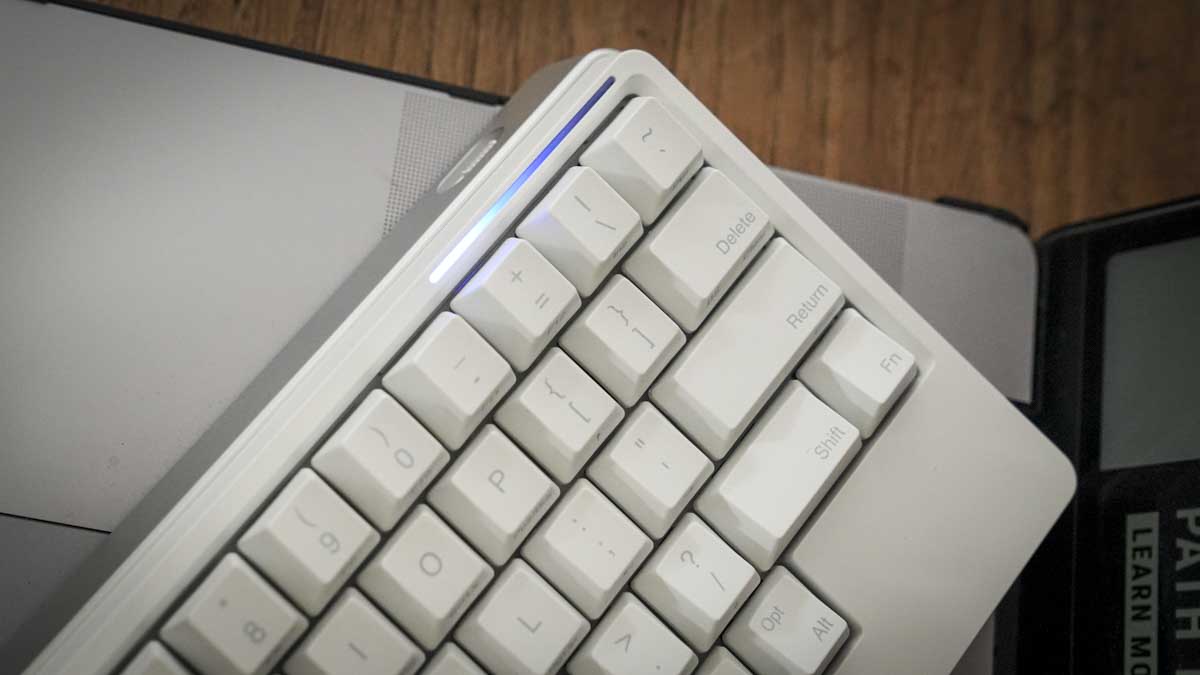
HHKB Studio: Specs
Colour: Charcoal, Snow, White
Labels: Stamped, Blank
Connection: USB-C, Bluetooth 5.1
Key Mapping: Happy Hacking Keyboard Keymap Tool
Modes: HHK, Win, Mac
Weight: 937 g
Dimensions: 360 x 132 x 40mm
HHKB Studio: Design
From the outset, the quality of the HHKB Studio keyboard is obvious, with the iconic key layout and design that instantly highlight this input device as something very different.
Aesthetically, it looks great and a little like a throwback from the 90s, when the original HHKB keyboards were designed. The layout sees keys like the Control, Delete/Backspace, and other simplification modifications to the standard layout, which have made these keyboards a popular choice amongst enthusiasts. The 60% keyboard also enables a smaller profile, which makes these keyboards far easier to travel with, and while the form factor may be smaller, all of those hidden keys can be accessed through the use of the Fn buttons. Getting used to all the combinations you need to access all the characters and functions takes time, but as most users will only use a small proportion of the full set of keys and functions, this all makes sense.
That smaller form factor sees the keyboard size come in at 360 x 132 x 40mm and weighs 937g with the four AA batteries used to power the keyboard when Bluetooth is activated.
Checking over the keyboard, I noticed that the use of PBT keys reinforces the premium feel. It's available in the Snow colour that I've looked at in this review, and there's also a Charcoal option - considering which colour you should go for is usually just an asthetic option, but here with the Key Legands, the white and grey used for the stamps stands out nicely - on the charcoal version these stamps are extremely difficult to see, which will for many completely change the use of the keyboard despite the only difference being the colour. The keycaps are also available, either stamped or blank, depending on your use, and as you'd expect from a keyboard of this price, the keys are replaceable if you want to customise the keyboard to certain applications.
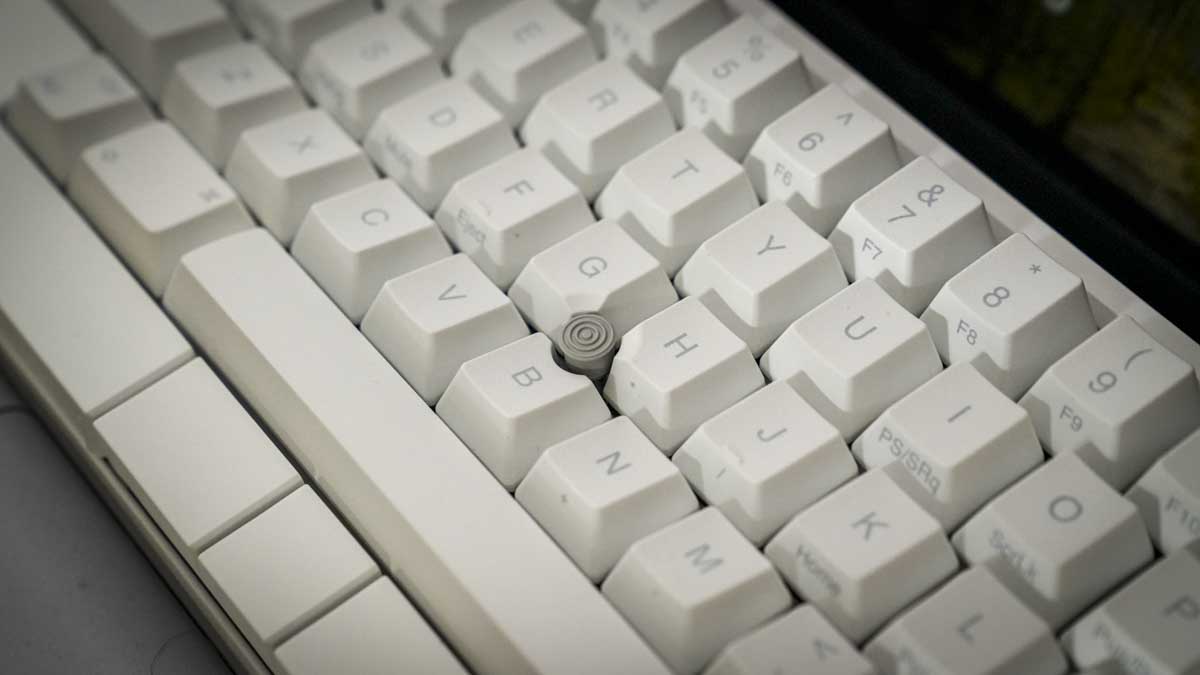
The 60% layout is well laid out as standard, with the Fn key enabling you to quickly access the additional characters when needed. Alongside the keys, you also have three mouse-style buttons laid out at the front of the keyboard, with the middle button assigned as a second Fn button. In the middle of the keyboard is the small joystick, which enables you to move the cursor, and then around the sides and front edges of the unit are the gesture pads. These are long strips with a small raise at each end so that you can feel the full extent of the gesture strip.
While most of the mapping is done using the Happy Hacking Keyboard Studio Keymapping Tool Software, there's also a hardware route to activating and deactivating some features. On the back, under the battery cover, is a row of DIP switches that can be used to activate or switch off keys, gesture controls, as well as other functions and features.
On a final note, on the back of the keyboard is the USB-C port. This enables you to utilise a wired connection to your computer, which is needed when you're mapping keys and using the key mapping software. Or, if you unplug it, you can switch over to the Bluetooth function.
- Design: 4.5 / 5
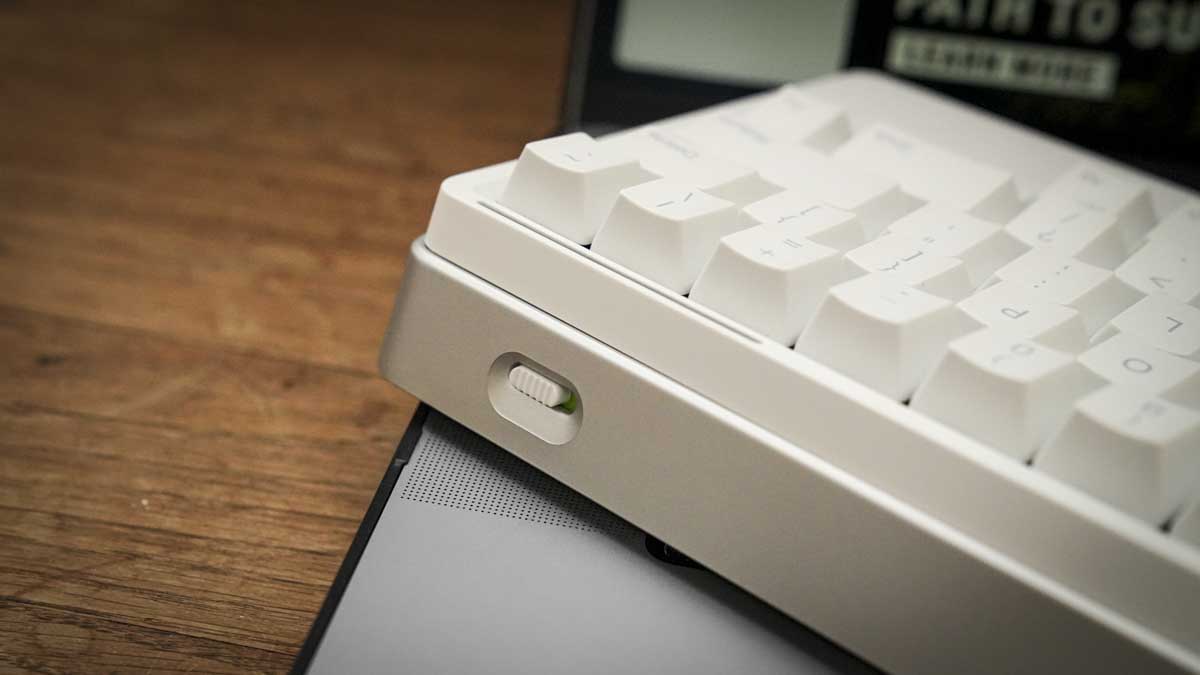
HHKB Studio: Features
Taking a look through the features and from the outset, it's obvious that this is a very different keyboard from most, with the option to fully customise and adapt the keyboard as you need for your intended use.
Key features include the small joystick in the centre of the keys, which HHKB refer to as the pointer stick cursor, and this is joined by three mouse buttons on the front edge of the unit. The 60-key layout makes for an extremely compact design.
One of the unique features of the keyboard is the gesture pads on the side and front of the keyboard. These enable volume adjustment, window scrolling, and moving items around the screen – which is great when coding – as well as enabling the creation of shortcuts in applications.
HHKB keyboards are known for their comfort and satisfying typing feel, and once again, with the PBT materials and 45 g actuation linear mechanical switches, you get a quiet tone when typing. While not silent, the noise is extremely pleasing. As previously mentioned, the keyboard is hot-swappable, so if you want to change keys, then you can.
The Keymapping software lies at the heart of the power of this keyboard, and using the simple interface, you can update and change the function of every key on the board. This gives you massive scope for use, adjusting the functions of the keyboard for different applications so that the keys you need are all in the right place to complement your workflow.
Through this test, I used three of the four profiles to set up keyboard environments for Word, Final Cut Pro X and Photoshop.
Connection-wise, the HHKB Studio utilises either USB-C or Bluetooth, which offers wide compatibility with Mac and PC systems. One feature of the Bluetooth connection is that you can connect the keyboard to up to four devices, although not simultaneously. Simply pair with the first device, then the second, and switch between them using a key combination.
HHKB is known for its 60-key layout design, and once again, this studio follows these design principles, with the control key placed to reduce finger travel – a feature that has made these keyboards popular with programmers. There are a few other features of the design that really stand out, including the on/off switch at the back, the integrated battery box, a 4-section LED light strip on the top left of the keyboard that highlights the connection type.
The keycaps are made from PBT which is designed to withstand years of use and avoids the shine that can affect cheaper keyboards (including those from Apple), and of course, characters are stamped using dye-sublimation so that they won't fade.
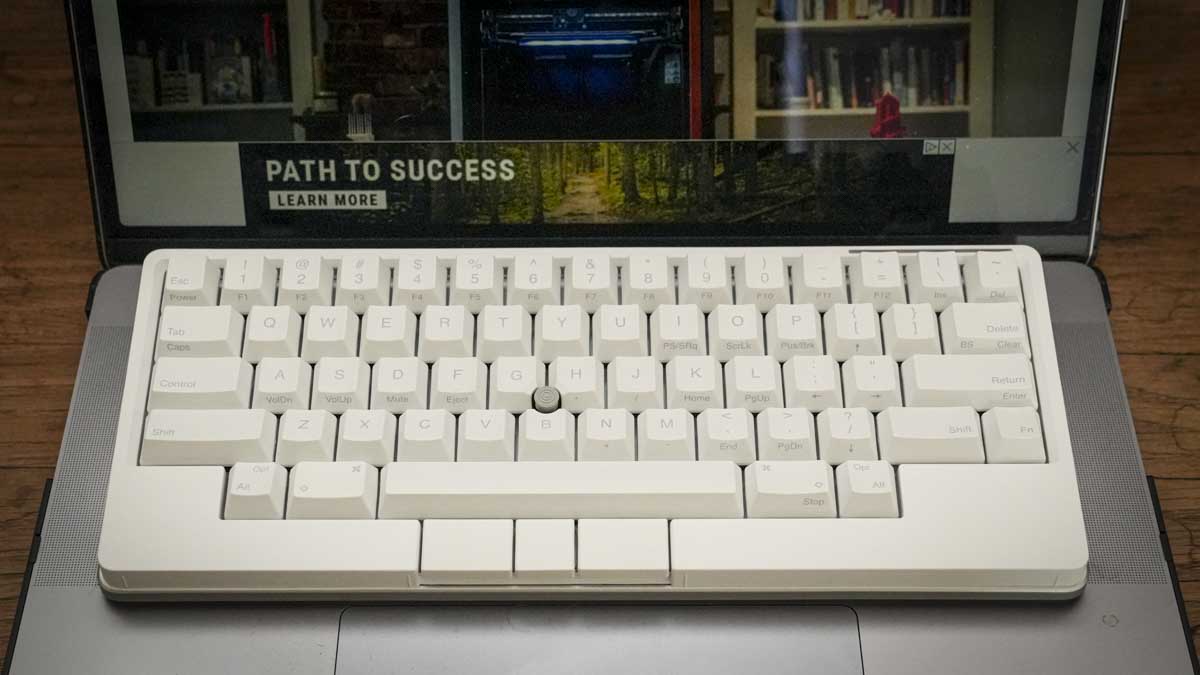
- Features: 5 / 5
HHKB Studio: Performance
Getting started with the HHKB Studio is easy enough at the base level: plug it in through the USB cable provided or connect it through Bluetooth, and off you go. Used as an almost standard keyboard – taking into consideration the key repositioning – it feels great, with the raised position of the keys giving an instantly better and more comfortable typing experience than the standard flat Apple keyboard that I'm used to using.
Having been immersed in the HHKB typing experience for the last month, many of the initial quirks of use have now been cemented into muscle memory – most notably the backspace and use of the cursor keys with the Fn button pressed. The fact that the Fn button is right where your little finger often sits soon makes its use intuitive.
When switching from the flat expanse of most modern laptops to the rise of the HHKB with its retro style of keycaps, the initial transition can be a little bit of a jolt, but if you stick with it, then the benefits of the design do become apparent.
One of the most noticeable workflow adjustments is when the three other control interfaces come into play with the keyboard – firstly the pointing stick/joystick in the centre of the keyboard. I had a ThinkPad a few years ago with something similar, and at the time, I had a love-hate relationship with the thing. Here, once again, once I'd slowed the initial pace of its interaction with the cursor, I had mixed feelings and ultimately ended up, for the most part, using the touchpad on the MacBook Pro rather than the stick.
However, the three mouse buttons on the keyboard made sense – being able to left and right click just made interaction in applications faster and more fluid. As an addition, these keys are something that I found myself very much reliant on, especially in Photoshop and Final Cut Pro.
The gesture control strips that surround the keyboard were something completely new to me, and while they could be seen as a gimmick, once you start to use them, their use is just revolutionary in the way that you interact with your computer and the applications. At a base level, adjusting the computer's volume with the left gesture strip just becomes intuitive – as does scrolling and scrubbing through footage.
The more I used the Studio, the more the Keymapping Tool was used to reassign and map keys to the applications that I was using. This all worked well, with different profiles set up for Photoshop and Final Cut Pro X. However, the Keymapping software only enables key mapping and not the mapping of combos or macros to a single key. In the applications, you still need to utilise key combos to apply different tools and functions.
The more I used the keyboard, the more the gesture pads came into play, but without full application support, you do feel like you're only just touching the surface of what should be possible with this keyboard. A quick look online did highlight ways to use third-party software to enable key combo mapping, but this does start to get a little involved and beyond the remit of this review.
Suffice to say, after a solid month with HHKB keyboards, I've been really impressed with the Studio and how it feels to type, edit, and generally interface with my computer.
- Performance: 5 / 5
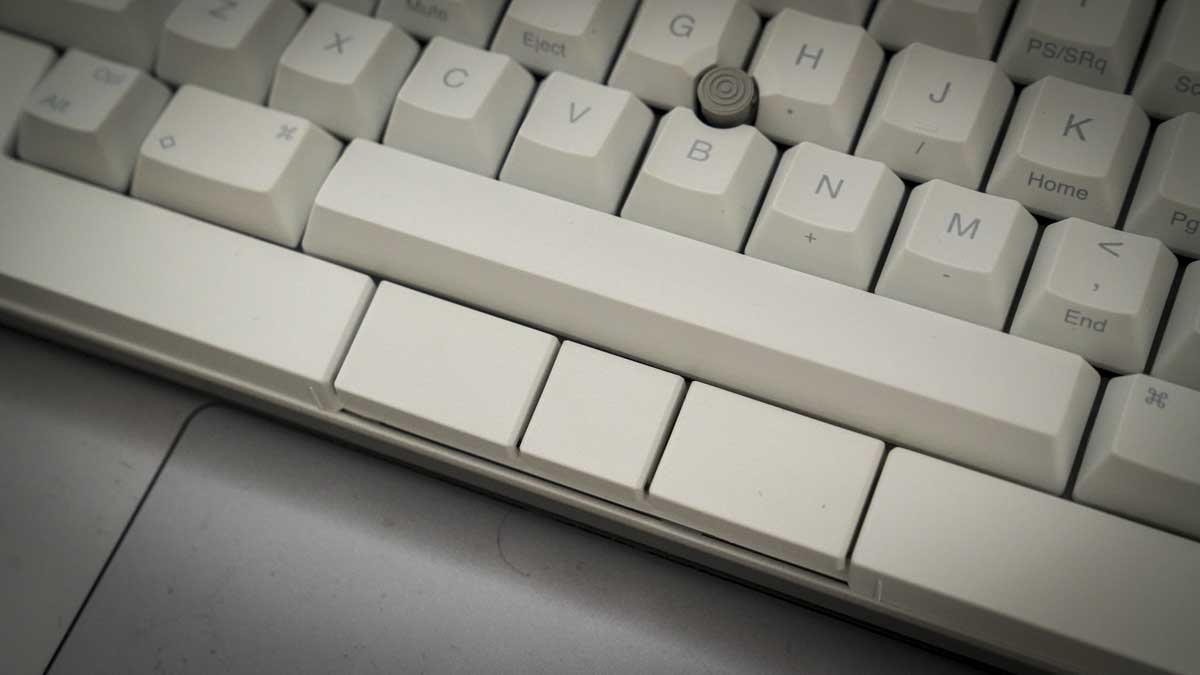
HHKB Studio: Final verdict
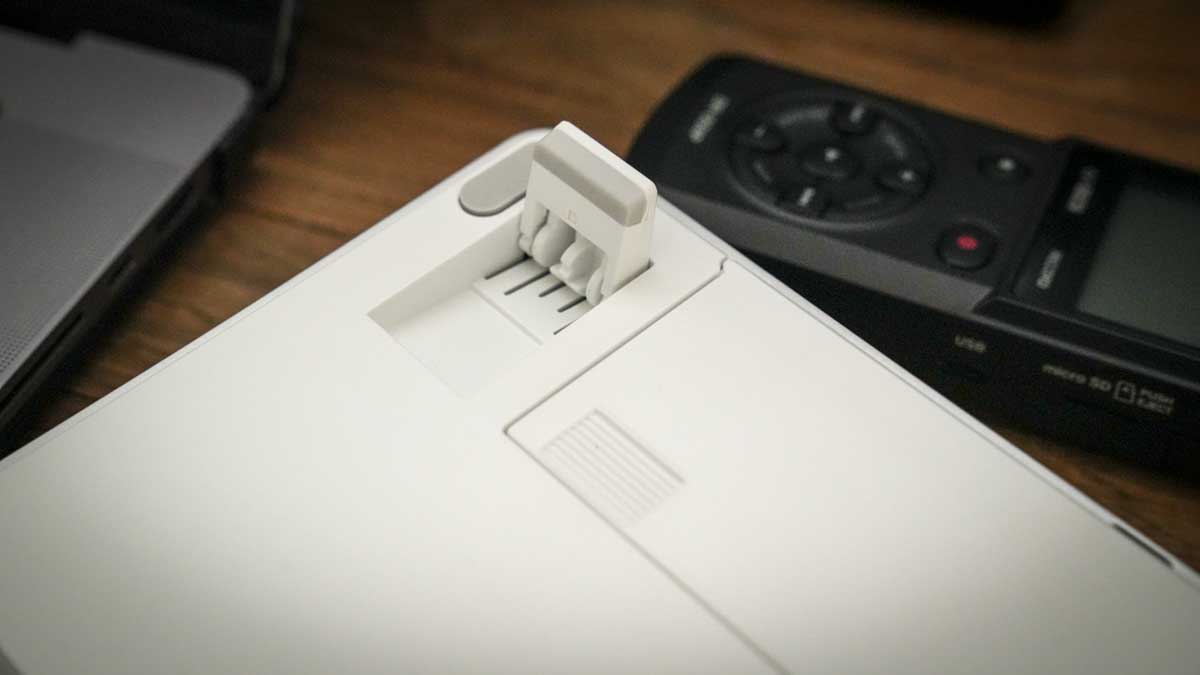
On the surface, I can really see why the HHKB keyboards have such a dedicated following, especially this Studio model, which in every way is a level up from the Hybrid that I have previously looked at. The build quality is superb, and it feels built to last for years. I also like the fact that you can swap and change the keys to your own custom options if you want, and then there's the integration of the mouse keys and those gesture pads, which just give everything a far more intuitive way to interact with your machine.
There's plenty to like here, and while I am only a month into the test of this keyboard, it has changed the way that I work. The typing position is far more comfortable, and the key layout – now I'm used to it – all makes sense, even beyond Xcode.
While the pointer stick cursor I can leave, I can also see how some people would really benefit from its position and use, and if you're really stuck for space, then this is a nice addition, but it is one that I would be happy to lose.
On the other hand, the three mouse keys were a bit of a surprise. I thought the position would get in the way, but in reality, they were just useful – readily accessible when I needed them.
The real headline features here, aside from the feel of the keys, are the gesture control strips. Once you get used to them, they work incredibly well, enabling you to swipe up, down, left and right to adjust functions and settings.
While there's a good amount of adjustment, there are also a few limitations through the Keymapping software. However, this is a keyboard that already offers more than most – which just makes me want, even more.
Should I buy the HHKB Studio?
Buy it if...
Don't buy it if...
For a comfortable typing experience for professionals, we've reviewed the best office keyboards and the best keyboards for programmers.







